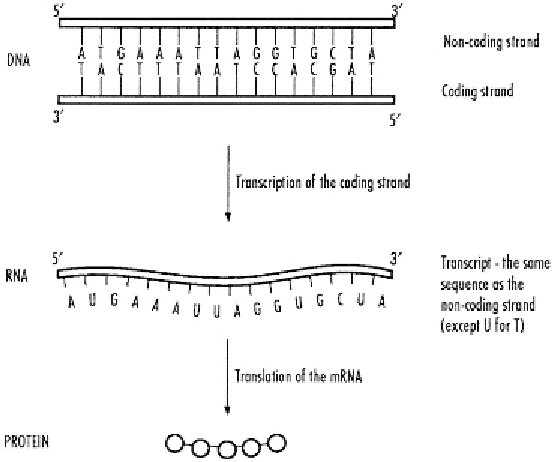Biology Reference
In-Depth Information
Figure 2.1
Expression of protein-coding genes involves transcription of the coding strand of DNA
to pre-mRNA by RNA polymerase and then processing the pre-mRNA to mRNA in the nucleus
before it is transported to the cytoplasm where the mRNA is translated into proteins on the
ribosomes.
molecule is determined by the sequence of bases in the DNA coding strand. Base
pairing occurs between the DNA bases and the newly forming single-stranded
RNA molecule. Nucleotides are added to the 3
′
-OH end of the growing end of
the RNA molecule; thus, synthesis of RNA proceeds in the 5
′
to 3
′
direction, as
does DNA synthesis (
Figure 2.2
).
Eukaryotes have three types of nuclear RNA polymerases, called RNA poly-
merase I, II, or III, and each is responsible for transcribing the three different
classes of genes (
Carter and Drouin 2009
). RNA polymerase I primarily is respon-
sible for synthesis of class I genes; this class includes the large rRNAs in the
nucleolus. Class II genes include all the DNA sequences that code for proteins
and some small nuclear RNAs (miRNAs, small nuclear RNAs [snRNAs], snoRNAs).
RNA polymerase III synthesizes tRNAs, 5S ribosomal RNA, a small ribosomal RNA
and snRNAs not made by RNA polymerase II.
Figure 2.3
illustrates several of the elements of a typical eukaryotic class II
gene. This gene consists of noncoding introns, amino-acid-coding exons, one or
more promoters, and several (in this example, six) enhancer elements.

